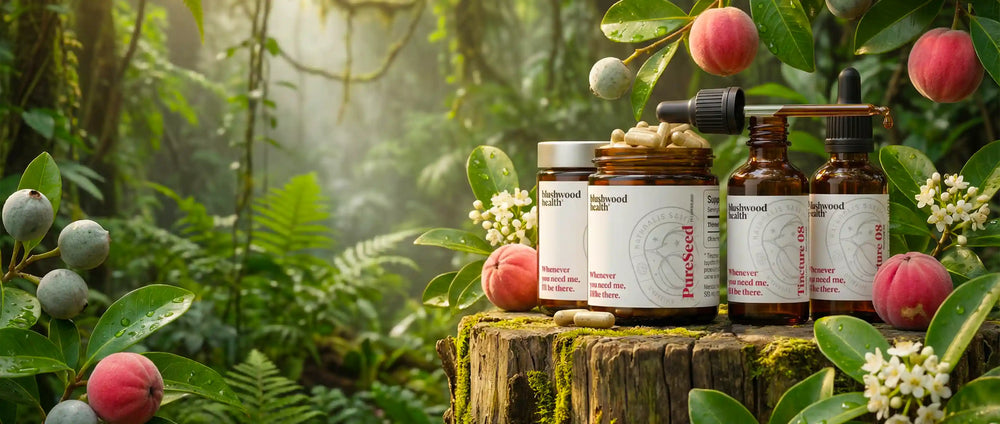Stanford Researchers Discover Way to Synthetically Produce Cancer-Fighting Compound

Cancer is one of the leading causes of death worldwide, but new research from Stanford University could lead to better treatments. Researchers have discovered a way to synthesize a compound called tigilanol tiglate (TGT) within the lab, simplifying the process of obtaining the compound and allowing it to be inexpensively manufactured with fewer environmental impacts. The compound works by promoting a localized immune response against tumors, which can make some cancers — like melanoma, a particularly aggressive form of skin cancer — shrink by 70 percent in two weeks.
Stanford researchers have discovered a way to synthesize a cancer-fighting chemical within the lab, simplifying the process of obtaining the compound and allowing it to be inexpensively manufactured with fewer environmental impacts.
The compound, called tigilanol tiglate, is a promising anti-cancer agent. It's derived from a plant-based chemical and offers an alternative to traditional chemotherapy treatments that can cause severe side effects such as hair loss, nausea and vomiting.
Tigilanol tiglate is difficult to produce and unpredictable to use, however. Focusing on this compound has been difficult because of the instability and unpredictability of the compound itself. "So far it's been very hard to get large quantities of this drug," said co-author Zhiyong Cai, PhD . "If you can make it synthetically that would be really useful for patients who need it."
The compound, designated EBC-46 and technically called tigilanol tiglate, works by promoting a localized immune response against tumors.
Research into the compound, designated EBC-46 and technically called tigilanol tiglate, has been ongoing for more than two decades. The compound has already shown its ability to be effective against many different kinds of cancer. It is not a cure for cancer, but it can help to extend life expectancy in some cases where it would otherwise be short.
In animal studies, the treatment proved highly effective against many different kinds of cancer, including those that are highly resistant to current therapies.
The treatment works by promoting a localized immune response against tumors. In animal studies, the treatment proved highly effective against many different kinds of cancer, including those that are highly resistant to current therapies. The compound EBC-46 has been shown to be effective against many different kinds of cancer and targets only the tumor cells, leaving healthy tissue unharmed.
For some cancers — like melanoma, a particularly aggressive form of skin cancer — the compound shrank tumors by 70 percent in two weeks.
Skin cancer is the most common type of cancer in America, with approximately one in every five Americans developing skin cancer at some point during their lives. Malignant melanoma is a deadly form of skin cancer that causes almost 10,000 deaths annually in the United States alone.
The compound shrank tumors by 70 percent in two weeks, while other drugs took six months to show similar effects on smaller tumors.
EBC-46 works by targeting a specific molecule called CD47 that exists on all human blood cells but not on cancerous ones. When injected into mice with human melanoma tumors — which were injected with two different types of human melanoma cells — it triggered an immune response against the tumors.
However, the natural supply of tigilanol tiglate is limited because it can only be made from plants in the Euphorbiaceae family.
According to Stanford University researchers, a plant family that contains over 2,000 species and includes some 1% of all angiosperms (flowering plants), this means that finding more sources may be difficult.
Even if more of the plant could be farmed for use in pharmaceutical production, any changes in growing conditions could shift its composition. Because of this instability and unpredictability, researchers have been unable to produce synthetic chemistry analogs of this promising compound. That is until now.
The drug is made from a plant that's only found in a small area in Australia. It has been described as "an extremely rare, low annual herbaceous species that grows on the banks of creeks and rivers."
The plant is not easy to grow, and its growth conditions are unpredictable. As a result, researchers have been unable to produce synthetic chemistry analogs of this promising compound. That is until now.
“Our group has spent the last 40 years developing new ways to synthesize complex natural products such as antibiotics and anticancer agents — basically any drug that comes from a biological source,” said Wender, who also holds the Robert F. Cantrell Professorship in Humanities and Sciences at Stanford. “Now we are able to make drugs on demand with predictable quality and reproducible results. This latest work is another good example of our quest to find new ways to treat disease with small molecules.”
Stanford University researchers have discovered a new way to synthesize a cancer-fighting chemical within the lab, simplifying the process of obtaining the compound and allowing it to be inexpensively manufactured with fewer environmental impacts.
The finding was made by Michael Wender, professor of chemistry at Stanford University, and his colleagues in a study published October 5 in Stanford News.
Conclusion
The Stanford researchers' findings could have a significant impact on cancer treatment by providing a cheaper and more sustainable way to produce artemisinin. In addition, the process of making artemisinin from engineered yeast cells is much less wasteful than the traditional chemical process used today in the field.
